There’s no better way to brighten up a dreary winter day than with a basket of bright flowers, or a vase of fragrant branches.
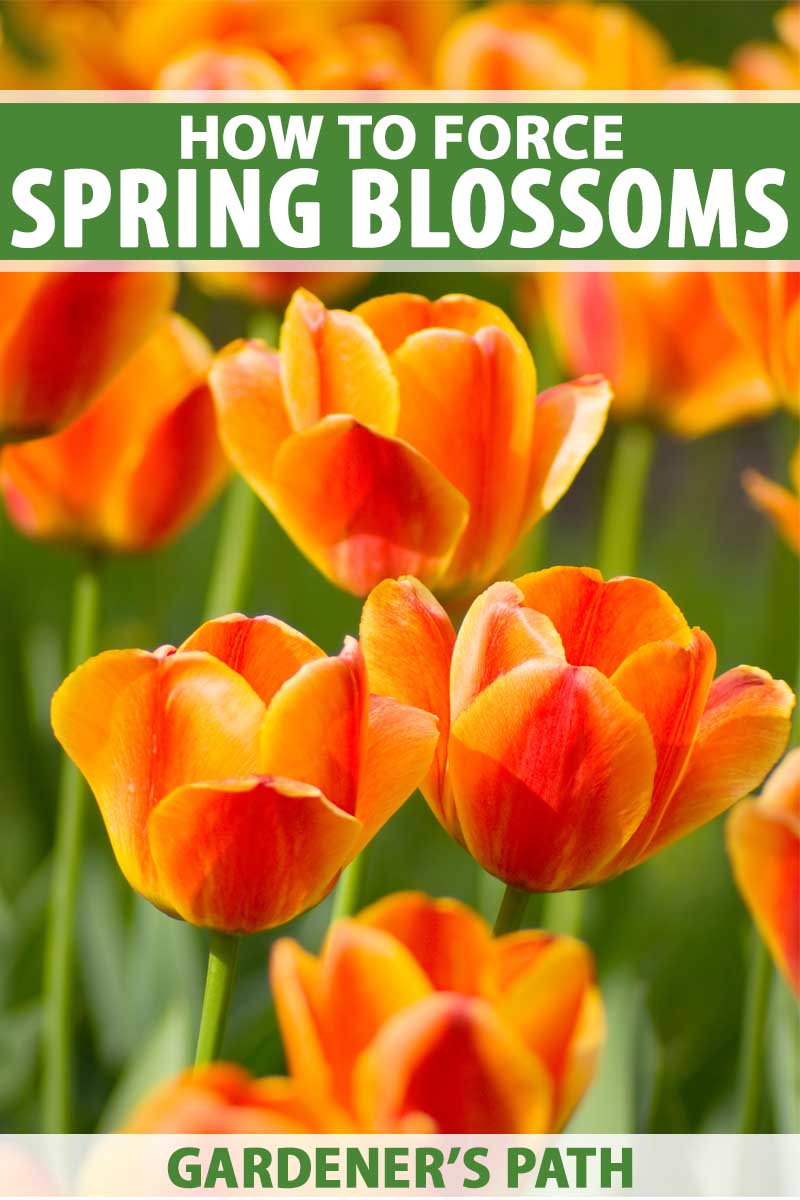
We link to vendors to help you find relevant products. If you buy from one of our links, we may earn a commission.
It’s especially gratifying when you cultivate them yourself in the dead of winter, with a process called “forcing.”
What Is Forcing Blooms?
To force the blooming process is to imitate what nature does outside, by doing it inside.
This means recreating the cold of winter, the warmth of spring, and the rain that falls, to coax flowers to open before they would normally.
Coaxing indoor blooming is a favorite pastime of gardeners who find it difficult to wait for the ground to thaw and outdoor gardening to resume.
I’m one of them.
My least favorite time of year is the middle of winter, when the skies are gray and the wind is fierce.
That’s when I look longingly out the windows to my frozen garden, and count the days ‘til spring. And that’s when I think about my dad.
He first introduced me to forcing blooms, as we walked through the yard on pleasant winter days, snipping forsythia and willow branches to create an indoor display.
It’s easy and fun to create artistic bouquets of branches and flowering bulbs. Read on to learn how!
From Dormant Twig to Flowering Foliage
Do you have forsythia, pussy willow, fruit trees, or other flowering shrubs and trees in your yard?
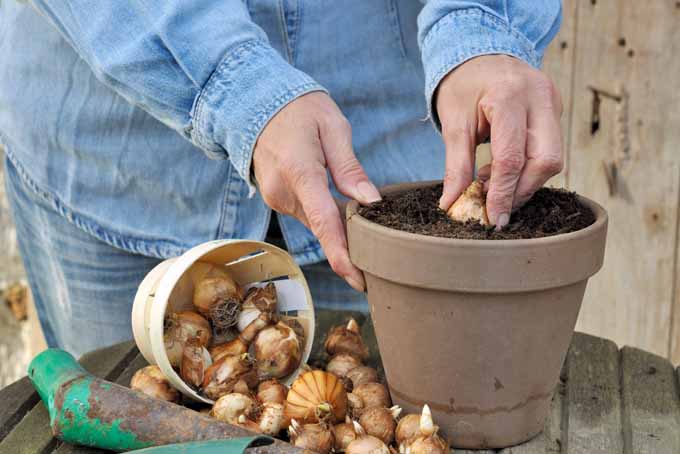
Go outside on a nice winter day, when the sun is shining and the temperature’s above freezing. Look closely at your shrubbery, and notice the nodules on the branches.
These are next season’s flower and leaf buds, and they’re in a dormant phase through the winter months until they burst open in the spring.
Think about what type of arrangement you’d like to make. Straight and long branches are great for tall vases, and short and irregular ones make for interesting displays in shallow arrangements.
How to Force Budding Branches
You’ll Need:
- Bucket
- Citrus soda or antiseptic mouthwash
- Pruning shears
- Vase of your choice
- Water
Here’s How:
1. Fill a bucket with four inches of warm water and two tablespoons of citrus soda or antiseptic mouthwash. This will nourish the branches and inhibit the growth of bacteria.
2. Select a vase or container.
3. Use your pruning shears to cut as many budded branches as you like. Cut at random locations, to maintain the overall shape of shrubs and trees.
4. Under warm running water, cut each stem at a 45° angle. Then cut upward into each stem approximately two inches, to split the stem. This will help the branches drink water.
5. Place the branches into your bucket of prepared water.
6. Place the bucket in a cool location away from direct sun, to give the branches a chance to acclimate to the indoors. Allow them to rest for a day.
7. Arrange as desired in a vase of fresh water with one-half teaspoon of citrus soda or mouthwash added. Blossoms may appear as early as 10 days after gathering.
8. Snip the ends of the branches and change the water/soda mixture daily.
Branch material that is forced may grow roots and be suitable for planting outdoors. We’ll talk about that shortly.
If you think you’d like to let your branches grow roots, don’t snip them again, but continue to change the water/soda daily.
Learn more about forcing branches in our complete guide.
Awakening the Potential of Hardy Bulbs
Another way to create the illusion of spring indoors is with flowering bulbs.
Hardy bulbs are available in nurseries and garden centers starting at the end of summer.
They are planted in the fall, and lie dormant until they bloom in spring. These are the best bulbs for forcing indoors.
You may also purchase high-quality bulbs online from nurseries like Burpee. For forcing indoors, you’ll want to order early, to have them in hand by the end of October.
Two of my favorites are tulips and hyacinths.
Tulips
Early-blooming varieties are your best bet. You can select from a wide range of colors, and many are scented.
Tulips are among my favorite flowers, and always a hit with the kids at my house.
Did you ever notice that perfectly arranged tulips don’t stay perfect for long?
They go every which way when no one is looking.
This is because tulips are very active flowers; even after cutting, the stems continue to grow.
In addition, they reach for the sun, a characteristic called “phototropism” that causes bending unless their container is rotated daily.
And if that isn’t entertaining enough, tulips open in the morning light and close again when darkness falls, like the perfect ending to a perfect day.
Read more about growing tulips here.
Hyacinths
Hyacinths are intensely-scented spike flowers with multiple blossoms.
They come in equally intense colors, including hot pink and deep purple. Select varieties that are recommended for forcing.
When buying bulbs in person, choose those that are firm and weighty, with crisp, papery skins. If they feel spongy, brittle, or lightweight, keep looking.
Store bulbs in an unheated, dry location with good air circulation. I keep mine outside in the shed, in an old trashcan with a screen cover.
The cover deters mice. Rodents love to snack on bulbs during the lean months of winter – except for the narcissus, commonly known as the daffodil.
Keep the bulbs in storage until Halloween. Then prepare to pot them up.
You can read more about growing hyacinths here.
How to Force Hardy Bulbs
You’ll Need:
- Container of your choice with drainage holes
- Granular bulb food or bone meal
- Peat moss
- Potting soil
- Shards of pottery or small stones
- Small trowel
- Water
Here’s How:
1. Line the bottom of a container with pottery shards or stones.
2. Fill the container with a mixture of mostly potting soil, a handful of peat moss, and about a teaspoon of granular bulb food or a product like Jobe’s Organics Bone Meal, available on Amazon.
3. Use a trowel to make a shallow depression about one-half-inch deep, and set the first bulb into it, pointed side up.
Repeat with the remaining bulbs, spacing about one inch apart.
4. Water thoroughly and allow the container to drain completely.
5. Return potted bulbs to their cold location, where they will remain until after New Year’s Day.
6. Check the bulbs around Christmastime. They should have sprouts, and roots may be visible through the drainage holes.
7. Bring the bulbs in after the new year is underway. Water them and find a dark, cool place like a porch or basement, where they can acclimate to being indoors.
8. Place containers of bulbs near a sunny window once sprouts are green.
9. When blooming begins, continue to water and place containers farther from direct light.
10. Rotate containers frequently to prevent plants from leaning toward sunlight. Stake lanky stems if necessary, using twine and wooden chopsticks.
No Chill? No Worries
Do you live in a mild climate?
Consider purchasing pre-chilled bulbs that have been prepared for planting.
You can find pre-chilled hyacinth kits in pink, blue, and white, available from Tractor Supply.
Pre-Chilled Pink Hyacinth Bulb
Each kit ships with a single bulb and a decorative planter.
Special vases are available for forcing bulbs, but I don’t recommend them. While they showcase the root, bulb, and foliage to great advantage, they are often top heavy, and likely to tip over and break.
Another option for growing bulbs without chilling them first is an interesting type of daffodil.
Paperwhites – A Chill-Free, Soil-Free Option
The paperwhite narcissus is a fragrant variety of daffodil with multiple white blossoms per stem.
It is one of the easiest bulbs to force, because it requires no chilling or soil.
You’ll Need:
- Container of your choice with drainage holes
- Decorative stones
Here’s How:
1. Fill the container with sand, decorative pebbles, or marbles. This is the only potting medium you’ll need.
2. Place the bulbs, pointed side up, one inch apart on top of the potting medium.
3. Fill the container with water until it touches the bottoms of the bulbs.
4. Keep the container of bulbs in a cool room until you see roots through the drainage holes, and sprouts from the bulb tops.
5. Place the container in a sunny location until blossoms appear. Then place it anywhere you like.
6. Maintain the water level to keep the bottoms of the bulbs wet.
7. Rotate the container to prevent leaning, and stake as needed.
You can find paperwhite narcissus bulbs available from Burpee.
A Unique Year-Round Indoor Bulb
The Hippeastrum, commonly known as the amaryllis, is unique for its ability to live indoors year-round as a houseplant.
I’ve received several pre-potted varieties as gifts, and it’s always a celebration when their saucer-size blossoms open.
The amaryllis needs only light watering until it begins to grow. Then, keep the soil moist, but not soggy.
During bloom times, more frequent watering may be required. Stake with twine and chopsticks as needed.
As blossoms fade, remove stalks by cutting them down to about an inch from the bulb. When blooming ceases, care for your amaryllis as you would a houseplant, feeding, watering, and pruning as needed.
While the amaryllis may make itself a permanent home indoors, other forced bulbs and branches may be relocated to the garden when they’ve finished blooming.
You can find potted ‘Monaco’ amaryllis with a decorative shell metal cachepot available from Tractor Supply.
There’s also a new type of amaryllis presentation on the market. Instead of being potted in soil, the bulb is waxed or dipped in a glitter coating.
It’s decorative, requires no watering, and makes a great gift for growing inside and enjoying throughout the winter.
Note that the wax or glitter “shell” around the bulb may crack as the amaryllis grows, detracting from its appearance.
Read more about forcing amaryllis flowers here.
Planting Rooted Branches
After forced branches of forsythia and willow bloom, they may begin to grow roots and leaves.
I like to keep them in the house until all danger of frost has passed, then plant them on the perimeter of my property.
You’ll Need:
- Gardening gloves
- Rooting hormone
- Water
- Weeding tool
Here’s how:
1. Use a weeding tool, like you would use for dandelions, to make a hole in the ground about three inches wide and six inches deep.
2. Select a branch from your arrangement that has fine, white roots at the end.
Gently shake off excess water, and carefully dip the rooted end into a powdered rooting hormone.
3. Gently push the stem into the hole.
4. Secure the branch in an upright position by patting the soil closely around it.
5. Water lightly and pat soil down again.
Planting Hardy Bulbs
Like forced branches, hardy bulbs like tulip, daffodil, and hyacinth may also be put outside in the garden after they have finished blooming.
Hardy means they can withstand the cold of winter, so there’s no need to wait for the danger of frost to pass. As soon as you can work the soil comfortably, you may plant.
I find that results of an outdoor bloom the next spring are hit or miss with bulbs that have been forced indoors, but there’s nothing to lose in trying.
Keep a gardening journal and note which forced bulbs successfully transition to the garden.
You’ll Need:
- Chicken wire
- Floral scissors/shears
- Garden gloves
- Garden marker
- Granular bulb food or bone meal
- Ruler
- Trowel
Here’s How:
1. Keep the potting medium moist, and allow blossoms and foliage to wither.
2. Place the container of bulbs outside in a sheltered area to acclimate to the outdoors.
3. As soon as the ground is workable, select a location where you would like to see spring flowers next year. I like to choose a protected area that gets sun.
4. Use a trowel to dig a patch of soil to a depth of about six inches, and sprinkle in some granular bulb food or bone meal. Small bulbs, like crocus or grape hyacinth, should be planted about three inches deep.
5. Gently unpot the bulbs and trim away spent foliage.
6. Plant the bulbs in a cluster for dense color, or individually for a random display.
7. Use your trowel to gently cover the bulbs with soil, until the hole is halfway full.
8. Lay a piece of chicken wire over the soil to protect the bulbs from rodents.
9. Fill the hole the rest of the way, and pat the soil down firmly.
10. Place a marker near the bulbs to identify their type and location.
A Breath of Fresh Air
I enjoy forcing branches and bulbs indoors, especially when the ground outside is still frozen under a layer of snow.
Nothing lifts my mood faster than the heady scent of hyacinths on a cold winter morning. I feel as if I’m putting one over on Mother Nature with my own private spring.

Other bulbs you may enjoy forcing indoors are the crocus, grape hyacinth, iris, scilla, and snowdrop.
You can also plant an onion or head of garlic for pretty blooms, and tasty additions to your favorite dishes.
To get a jump on the season, our checklist is a great resource for more springtime gardening tips.
How do you keep your green thumb honed during the cold winter months? Share your thoughts in the comments section below.
And for more flowering bulb know-how, check out these guides next:

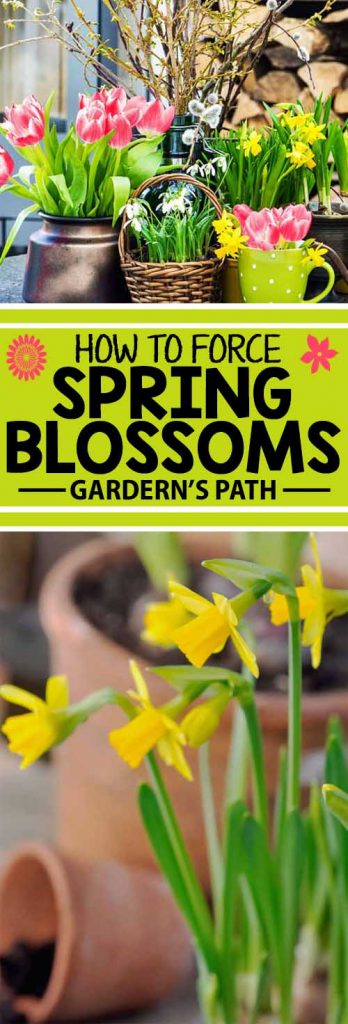
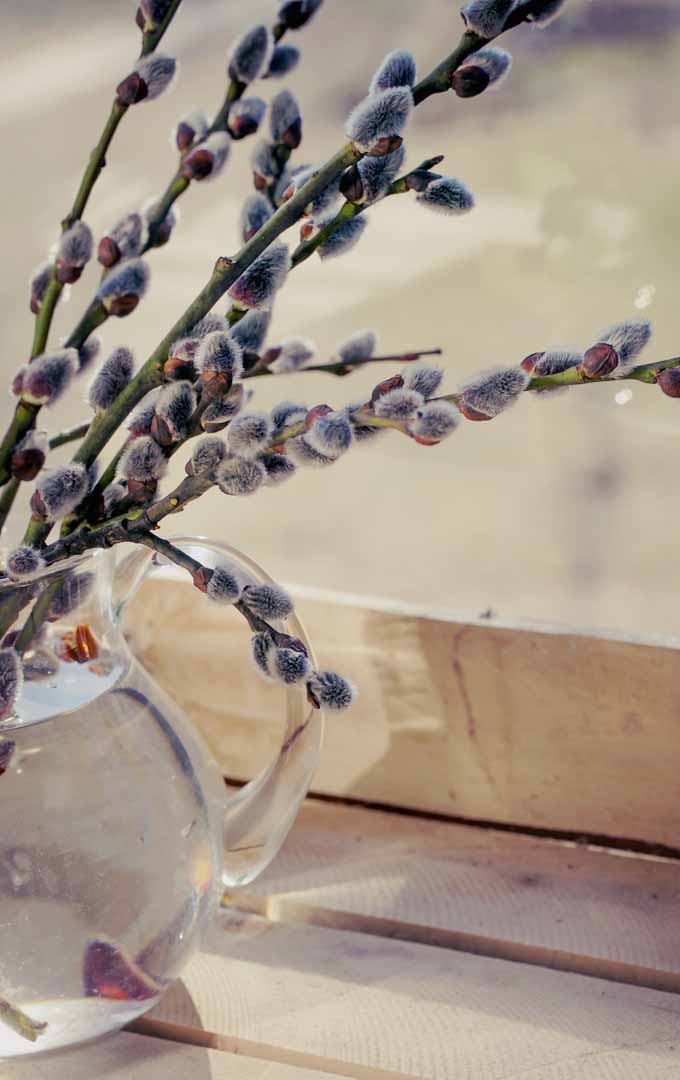
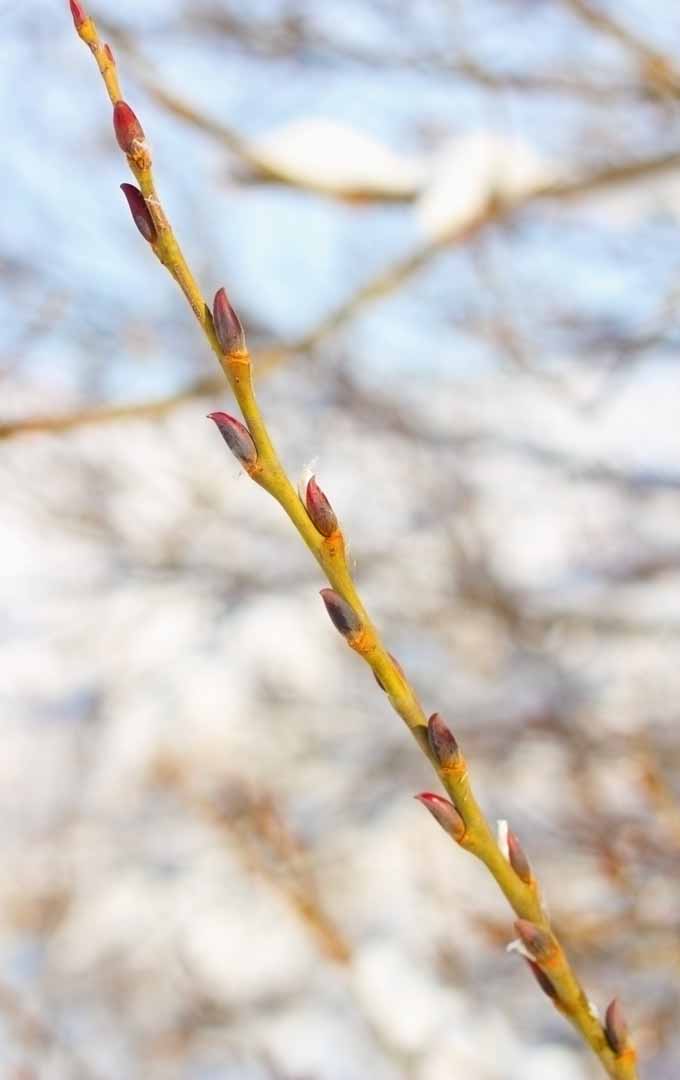
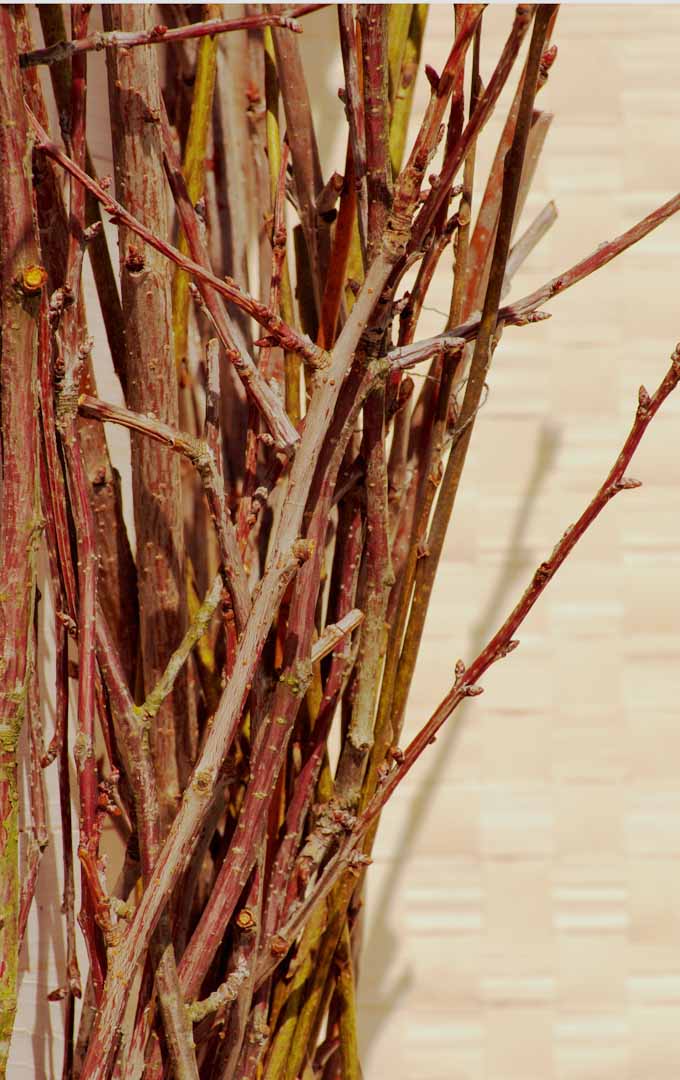
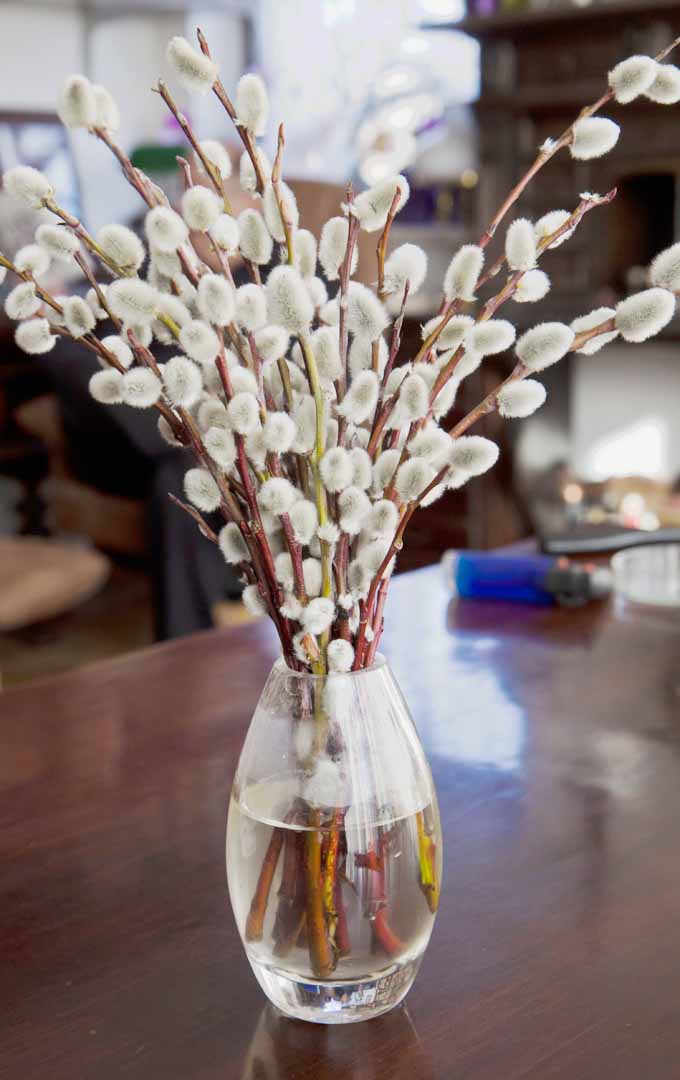
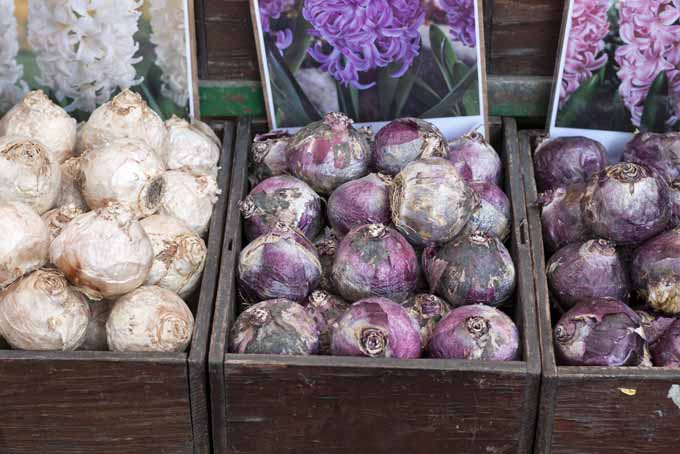


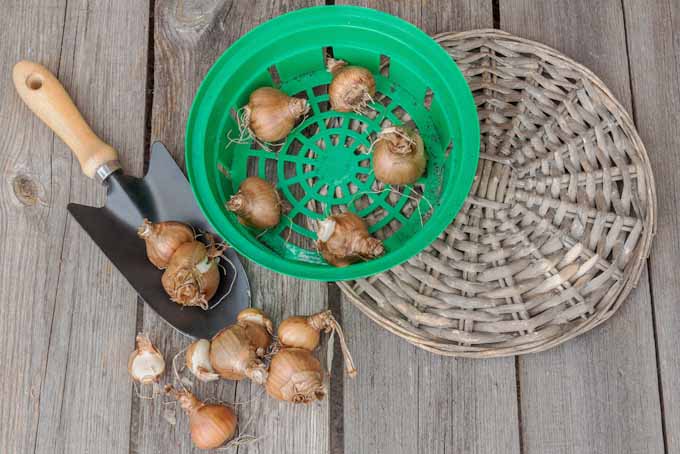

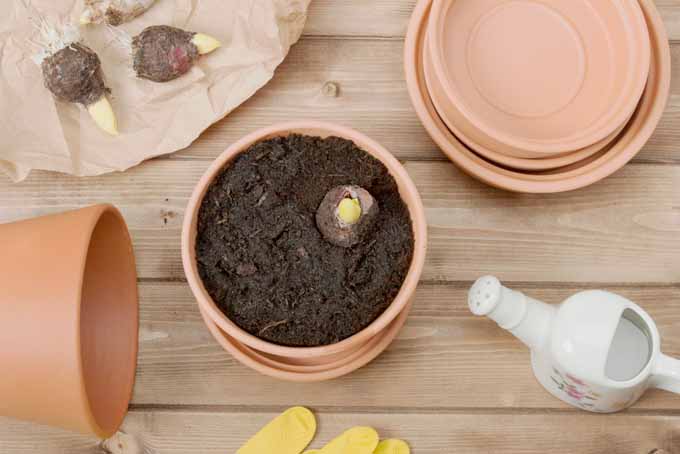
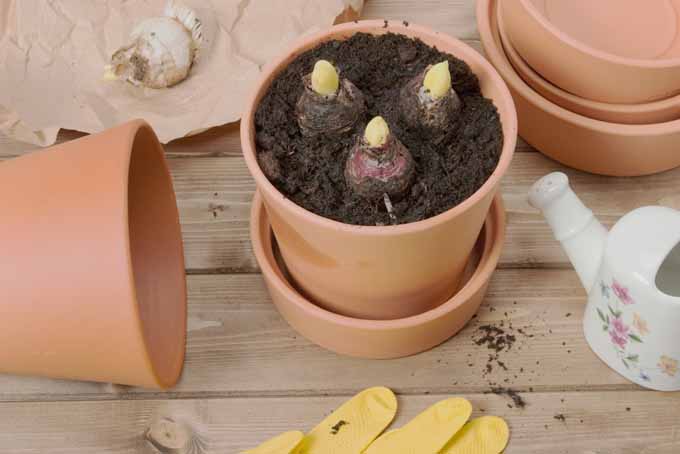

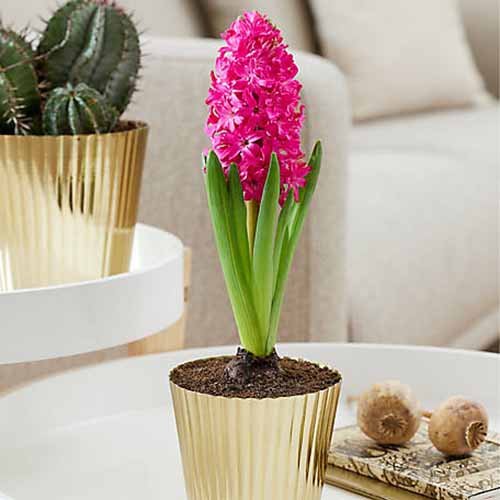
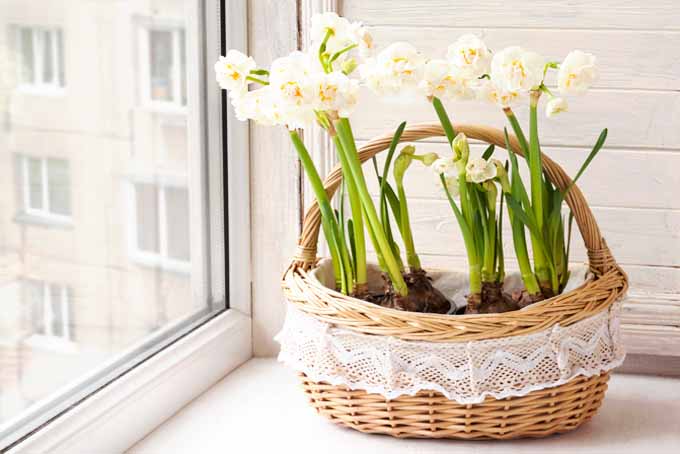
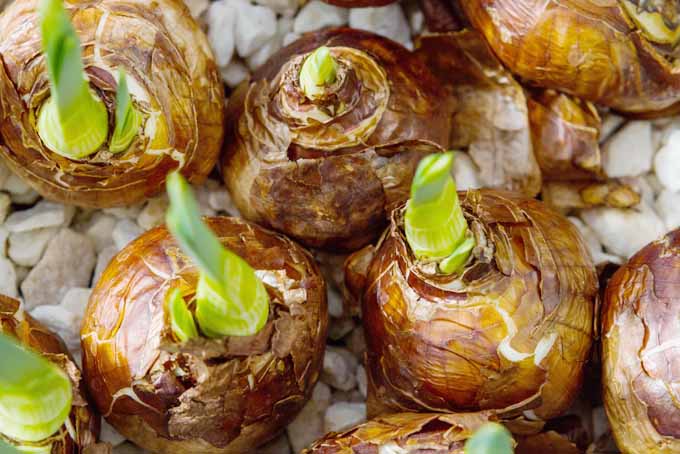
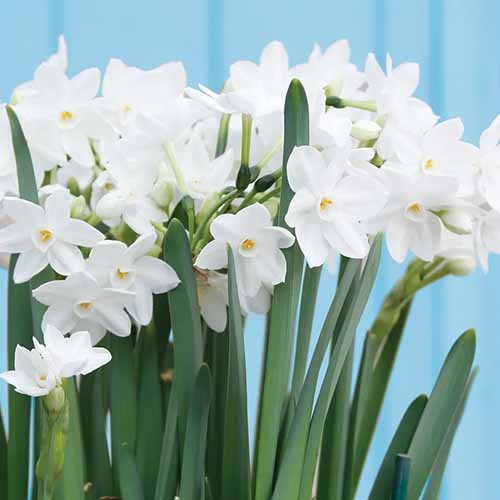




This was very helpful. I am planning a workshop. This article had lots of great info.